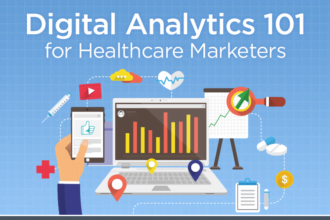Whether it’s paying a cable bill, mortgage, cell phone bill or other monthly recurring payment, consumers have been increasingly replacing paper check payments with online bill pay technologies for the past decade. Healthcare, often dubbed as being ten years behind other industries technologically, had a recent breakthrough in the adoption of electronic payments. The Department of Health and Human Services (HHS) recently released new rules on the electronic fund transfer (EFT) stand
Whether it’s paying a cable bill, mortgage, cell phone bill or other monthly recurring payment, consumers have been increasingly replacing paper check payments with online bill pay technologies for the past decade. Healthcare, often dubbed as being ten years behind other industries technologically, had a recent breakthrough in the adoption of electronic payments. The Department of Health and Human Services (HHS) recently released new rules on the electronic fund transfer (EFT) standards, a move that is projected to save the system billions of dollars and pounds of paper.
The new rules establish common interchange standards to streamline the format and data content of a transaction from a health plan (or payer) to a provider’s bank for claim payment and issuance of an electronic remittance advice (ERA). The ERA is a notice of payment sent to providers to help reconcile electronic payments with the associated claim(s). Historically, with minimal EFT volume, providers struggled with the reconciliation function, but the new regulations will require the use of a trace number that automatically matches the two.
Why has EFT payment adoption been slow to date and how does future adoption increase? Despite the majority of payers possessing EFT capabilities today, providers have been slow on the uptake because payments are submitted in varying data formats making the processing and reconciliation very difficult. With the new HHS rules, a standard data set will allow providers to rely on one system and/or format to take in and reconcile payments. Payers are motivated to implement electronic payments for a variety of reasons, but most predicated on the associated cost savings. I believe we will increasingly see payers forcing the transition within their provider network – perhaps even charging providers fees to cut a check.
Benefits of transitioning to electronic payments:
- Faster revenue cycle, reduced AR, and improved collection metrics for providers
- Increased productivity – more claims with less staff
- Reduced potential manual errors
- Increased business intelligence opportunities
Perhaps the most important benefit is increased business intelligence. Traditional paper checks limit payers (and providers) ability to mine data as there really isn’t much data associated with a paper check or image. However, EFT payments create new and unique opportunities to layer business intelligence and analytic solutions on the payment data sets. Some of the obvious low hanging fruit is Fraud, Waste and Abuse analytics which is a huge issue in healthcare with large opportunities for savings.
The healthcare system is finally closing the payment technology gap which will save billions of dollars, increase efficiency, and create new business opportunities to make healthcare smarter. Let me know what you think.
Judd Stevens
![]() Judd Stevens is an associate at TripleTree covering the healthcare industry, specializing in the impacts and transformation of health plans in a post-reform world. Follow Judd on Twitter or e-mail him at jstevens@triple-tree.com.
Judd Stevens is an associate at TripleTree covering the healthcare industry, specializing in the impacts and transformation of health plans in a post-reform world. Follow Judd on Twitter or e-mail him at jstevens@triple-tree.com.






